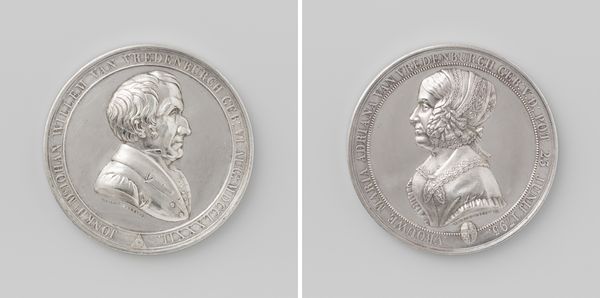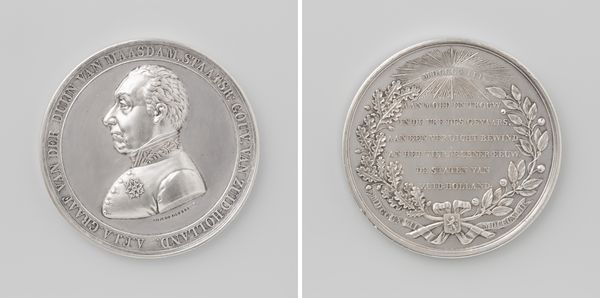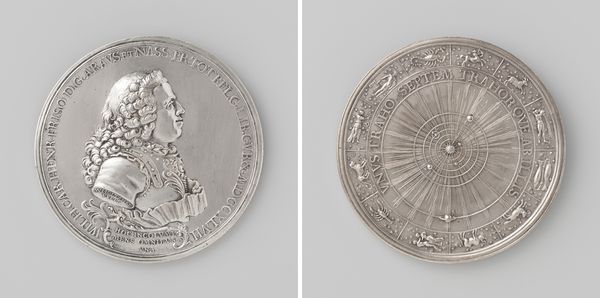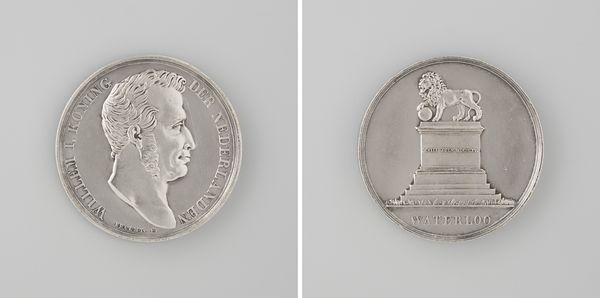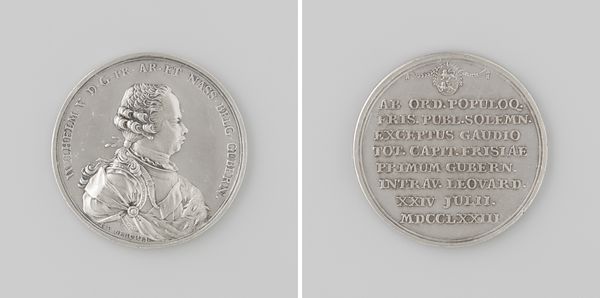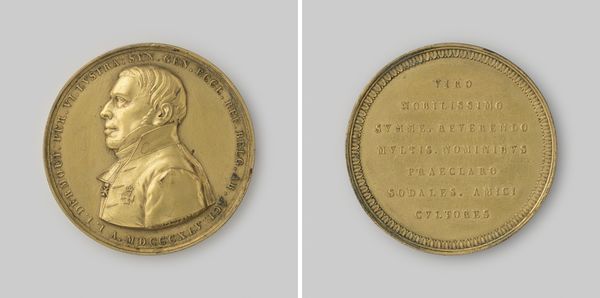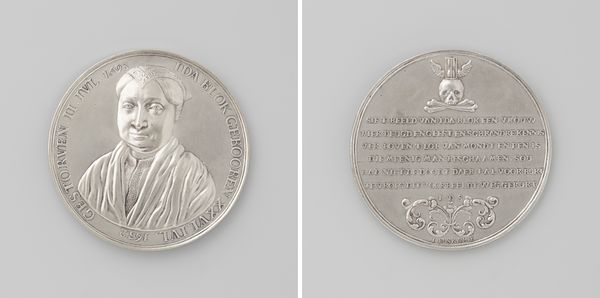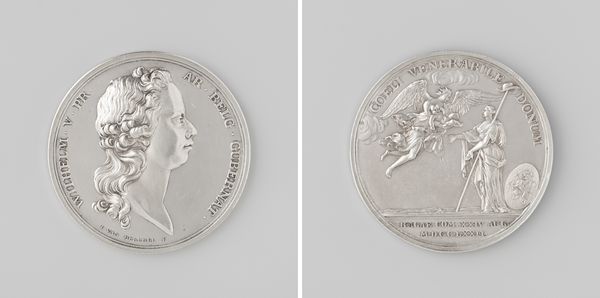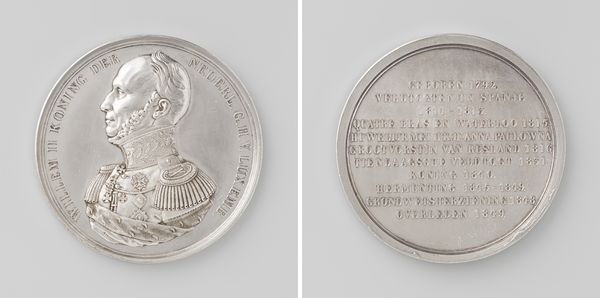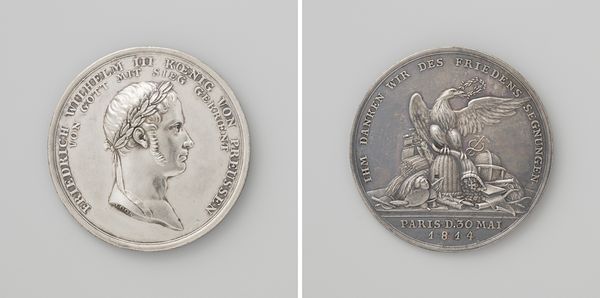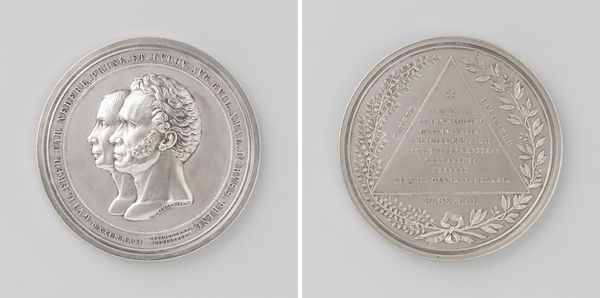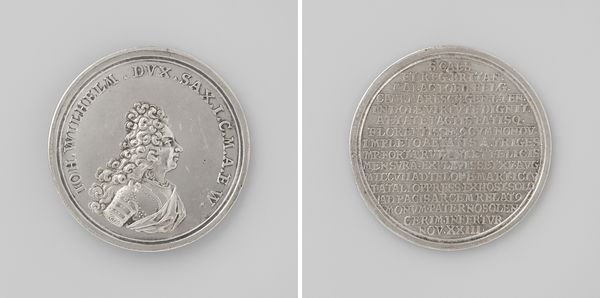
Ontmoeting van Napoleon I Bonaparte, keizer der Fransen en Alexander I, tsaar van Rusland op een vlot in de rivier Njemen bij Tilsit 1807
0:00
0:00
silver, metal, relief, sculpture, engraving
#
portrait
#
neoclacissism
#
silver
#
metal
#
relief
#
historical fashion
#
sculpture
#
history-painting
#
engraving
Dimensions: diameter 4.2 cm, weight 27.33 gr
Copyright: Rijks Museum: Open Domain
Curator: This engraved silver medal, crafted by Abraham Abramson in 1807, depicts "The Meeting of Napoleon I Bonaparte and Alexander I." The scene commemorates the Treaty of Tilsit. What’s your initial impression? Editor: My first thought is the stark contrast between the almost dreamlike silvery sheen and the weighty historical baggage such a meeting entails. There’s a definite tension there. Curator: Indeed. These two figures, Napoleon and Alexander, represent vastly different political and social ideologies. Examining their depictions provides insight. Look at how Abramson employs Neoclassical aesthetics, aiming for an idealized, almost god-like portrayal of these powerful men. Editor: But isn't this idealization itself a form of political statement? By rendering Napoleon and Alexander in this almost flawless, heroic light, the artist seems to endorse and solidify their authority. Consider also that a silver medal serves not just as a souvenir but as propaganda distributed among elites, normalizing and celebrating their alliance in very specific political terms. How complicit are artists in crafting these mythologies? Curator: Absolutely. Art, particularly portraiture of those in power, always negotiates the complicated relationship between patronage, artistic skill, and ideology. On the reverse, the symbolic celestial imagery suggests a kind of divine approval of their union. We need to analyze art not as neutral documents, but as products actively shaping the socio-political landscape. Editor: The distribution of such a medal certainly reinforces established hierarchies and channels specific interpretations to select social groups. This, coupled with its implicit messaging of legitimizing the meeting, underlines the instrumental role visual media had within systems of power at this period. Curator: Analyzing the visual culture alongside the politics is really essential for complete historical comprehension. Editor: It's more crucial than ever to highlight art’s involvement in affirming – and at times resisting – those very foundations of authority. This tiny silver object serves as a big example.
Comments
No comments
Be the first to comment and join the conversation on the ultimate creative platform.
